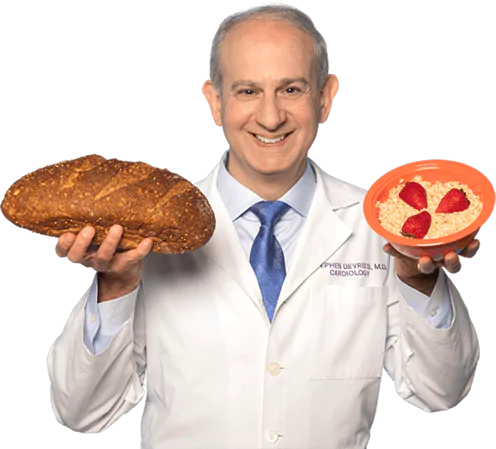

Earn a personalized certificate of achievement after each module!
Learn Answers to Common Nutrition Questions
Not a video or slideshow—you learn by active discovery.
15 Minutes of Interactive Learning!
In this module, you’ll learn the answers to these key questions.
Should I Consider a Low-Carb Diet?
- Does cutting carbs automatically cut my risk of diabetes?
- Do all carbs have the same effect on health?
- What are the best low-carb choices?
- What helpful foods would I risk eliminating if I go low-carb?
- Is sugar the main carb I should cut back on?
- Are unrefined sugars okay (like the natural sugars in fruit and fruit juice)?
- Is using artificial sweeteners a good way to go low-carb?
What Are Glycemic
Index and
Glycemic Load?
- Why is a food’s glycemic index more helpful than thinking of carbs as “simple” or “complex”?
- How can glycemic index and load help me make better food choices?
- Do foods have to be sweet to raise my blood sugar level?
- Can starchy foods have a high glycemic index?
Why Are Whole
Grains Better
than Refined?
- What makes a whole grain “whole”?
- What are some examples of whole grains besides wheat?
- What should I look for to make sure the bread I buy is truly “whole grain”?
- Why are intact whole grains even healthier choices than whole-grain bread?
What’s So
Important About
Fiber?
- How does fiber improve health?
- How much fiber do I need per day?
- Which foods have the most fiber?
- What would my daily diet look like to get the recommended amount of fiber?
Explore All the Modules in this Program
Carbohydrates: What You Should Know
Carbohydrates are important in the diet. But the kind you eat can make all the difference. Our interactive mini-course on carbohydrates will help you unravel the controversy about carbs.
Good Carbs and Bad Carbs
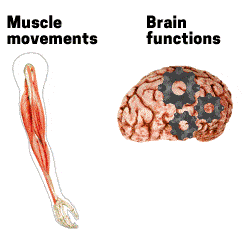
Our bodies use carbs to make fuel for all kinds of purposes – including keeping our bodies moving and our brains thinking. But a big challenge is that the typical American diet contains too many of the least healthy carbs. And when we over-eat certain kinds of carbs, the excess not only causes weight gain, it also raises our blood sugar level. Over time, that can lead to diabetes. Diabetes is a much bigger problem than most people realize, with fully half of all adults in the U.S. having either borderline or full diabetes.
Often, people wonder if it would be healthier to just avoid carbs altogether. But you don’t need to eliminate all carbs in order to eat better. It’s more a matter of choosing the best foods that have the healthiest carbs. All of the foods shown here have carbohydrates, some of which are healthy and some are not: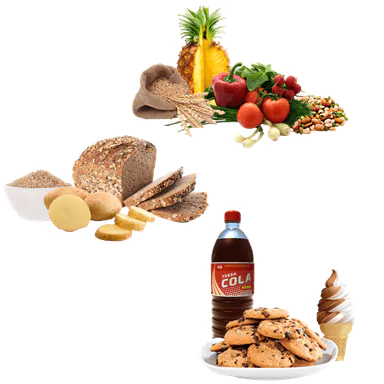
- Fruit, vegetables, and legumes such as beans: These are higher-carb foods, but they’re also high in important nutrients. And, they contain a lot of natural fiber that keeps much of the sugar from being absorbed.
- Bread, starchy vegetables, and grains: The carbs in these foods are starchy – in fact, the starch is really just another form of sugar. These foods have varying levels of fiber and nutrients, depending on how much they’ve been processed, and what’s been added to them.
- Sweetened drinks, pastries, ice cream, and other sweet foods: These foods are high-carb mainly because they contain a lot of added sugar – which you definitely should stay clear of. These foods have almost no fiber or nutrients.
So how do you know whether the carbs in your food are healthy or not? Great question! Let’s break things down a little further.
Carbohydrates: Three Types
Every carb can be classified as one of three types: sugar, starch, or fiber.
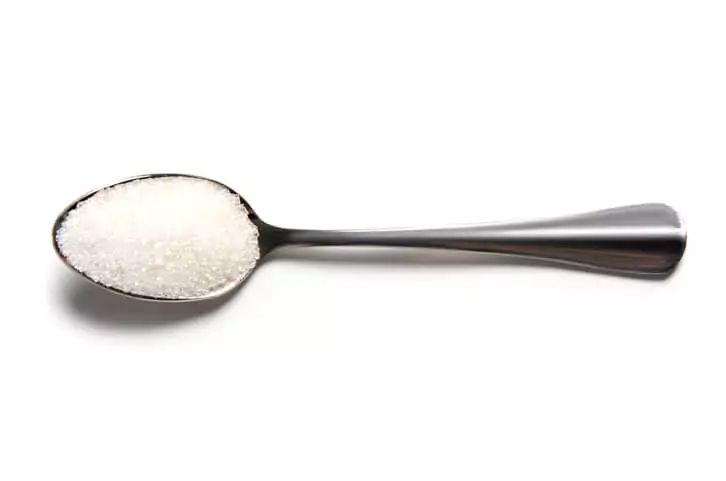 Type 1: Sugars
Type 1: Sugars
Sugar is a type of carb that goes by many different names: fructose, sucrose, dextrose, evaporated cane juice, and corn syrup – just to name a few!
Our bodies absorb both sugars and starches and use them for energy.
High-sugar foods are a problem because they deliver a powerful spike to our blood glucose level, often without any redeeming nutrients to boot. Over time, elevated blood glucose can lead to diabetes.
You might have heard that high-fructose corn syrup can be especially dangerous. , that’s a type of chemically-manufactured sugar that’s been in the spotlight a lot lately. But here’s an interesting fact: its chemical makeup is not that much different from normal table sugar. Its real danger is simply that it’s so prevalent in packaged foods – so people tend to consume a lot of it. It’s sweeter and cheaper than many other forms of sugar, so food manufacturers use it heavily in foods like bread, salad dressing, condiments – even seemingly healthy foods like applesauce!
This and other types of sugars can really be harmful if we consume a lot of them.
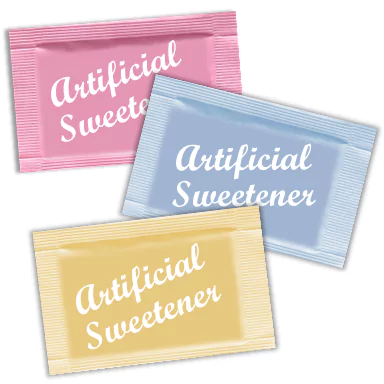 Are Artificial Sweeteners Safe?
Are Artificial Sweeteners Safe?
Many people assume that artificial sweeteners are a healthier choice than sugar. But there’s still a lot we don’t know about artificial sweeteners—so the best goal is to avoid as much added sweetener as possible, both real and artificial.
However, some people who consume a lot of sugar find artificial sweeteners to be a helpful bridge to a healthier diet. For example, say you currently drink two cans of a sugary soda every day, and you want to transition to the healthiest choice – water or sparkling water. If that proves too difficult, one strategy might be to swap the 2 cans of soda for one can of the artificially sweetened kind for a short time, and then swap that for water – the best option of all.
Avoid These Sugary Culprits
You might wonder if some sugary foods are better or worse than others. A good habit is to stay away from as many foods as you can that have added sugar. And when that’s not possible, choose products with the least added sugar.
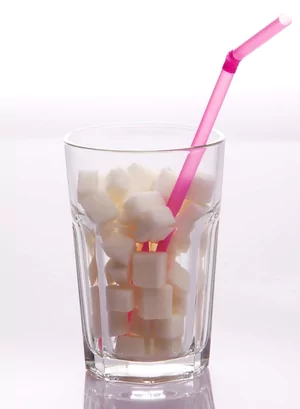 For U.S. consumers, the biggest source of added sugar is sugary drinks. Just one can of soda has 10 teaspoons of sugar! Fruit-flavored drinks, energy drinks, and sweetened flavored water are often just as bad. Try eliminating sugary drinks and go for plain water instead, or sparkling water flavored with unsweetened lemon or lime.
For U.S. consumers, the biggest source of added sugar is sugary drinks. Just one can of soda has 10 teaspoons of sugar! Fruit-flavored drinks, energy drinks, and sweetened flavored water are often just as bad. Try eliminating sugary drinks and go for plain water instead, or sparkling water flavored with unsweetened lemon or lime.
“Natural” drinks like fruit juice are sometimes just as harmful as sugar-sweetened drinks. Check the labels – even unsweetened apple juice has 24 grams of sugar. That’s like drinking a serving of cola! The sugar in juice comes from the fructose that occurs naturally in apples, but to our bodies, it has the same effect as any other kind of sugar. If you really want something sweet, instead of drinking fruit juice you’d be far better off eating the actual fruit. Unlike juice, the whole fruit contains fiber and vitamins from the skin and the pulp. These not only provide added nutrition but their fiber also helps slow down your body’s absorption of these natural sugars in the fruit.
Type 2: Starches
Starch is a second type of carb. As we mentioned above, our bodies absorb starch and use it for energy. However, starchy foods are known to raise blood sugar. Scroll down to learn more in our discussion of glycemic load.
Type 3: Fiber
Unlike starches and sugars, fiber is a type of carbohydrate that passes right through our digestive system without getting absorbed — but fiber has important health benefits, which we’ll cover in a moment.
Simple Carbs vs. Complex Carbs
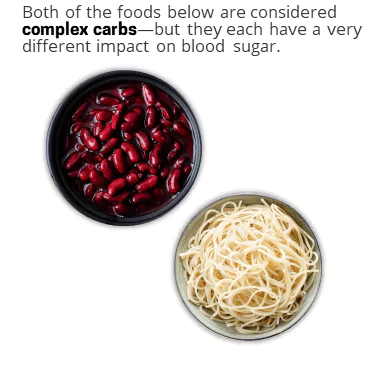 Have you heard that you should choose “complex” carbs over “simple carbs”? Actually, “simple” and “complex” aren’t such helpful terms. It’s true that sweet and sugary foods like this donut are considered “simple” carbs and are best avoided. But when it comes to “complex” carbs, there’s more to the story. For example, beans and cooked spaghetti noodles are both considered “complex,” but they affect our bodies very differently. A serving of pasta noodles will release twice as much sugar into the bloodstream as a serving of the beans!
Have you heard that you should choose “complex” carbs over “simple carbs”? Actually, “simple” and “complex” aren’t such helpful terms. It’s true that sweet and sugary foods like this donut are considered “simple” carbs and are best avoided. But when it comes to “complex” carbs, there’s more to the story. For example, beans and cooked spaghetti noodles are both considered “complex,” but they affect our bodies very differently. A serving of pasta noodles will release twice as much sugar into the bloodstream as a serving of the beans!
Carbohydrates: Understanding Glycemic Load
Instead of the terms “simple” and complex,” a better way of understanding the impact of carbs is a value called “glycemic load.” A food’s glycemic load is a measure of how much one serving of that food raises blood glucose levels.
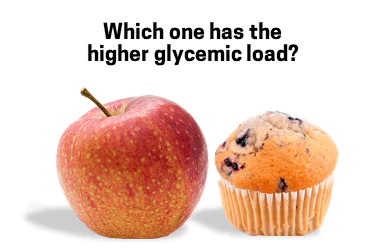 Here’s an example: A large apple and a small muffin each have about the same number of carbs, but the apple’s glycemic load is far lower. This means it won’t raise your glucose levels by nearly as much.
Here’s an example: A large apple and a small muffin each have about the same number of carbs, but the apple’s glycemic load is far lower. This means it won’t raise your glucose levels by nearly as much.
Here’s another example: you might understandably think it’s healthier to eat a bagel for breakfast instead of a glazed donut. But you might be surprised to learn that a donut’s glycemic load is about 17 (on the high end of “moderate”) whereas a bagel’s glycemic load is about 33—almost twice as much as the donut! Even though the bagel has no sugary glaze and there’s nothing sweet about it, it has a far bigger impact on blood sugar. How can this be? The truth is, a food doesn’t need to be sweet in order to raise your blood sugar level. In fact, starchy foods can raise blood sugar even more than sweet ones! The starchy, dense bagel has more grams of carbs than the sugary donut, so it raises your glucose level much more.
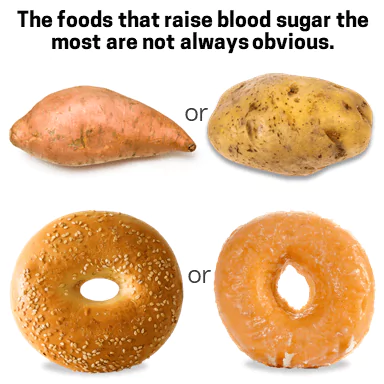 But don’t get the wrong idea – the take-home message isn’t to eat more donuts! Best is, mostly to stay away from both donuts and bagels. Both of them pack a pretty hefty glycemic load without giving you many nutrients.
But don’t get the wrong idea – the take-home message isn’t to eat more donuts! Best is, mostly to stay away from both donuts and bagels. Both of them pack a pretty hefty glycemic load without giving you many nutrients.
Let’s examine one more example. Which do you think is easier on blood sugar, a white potato or a sweet potato? It comes down to glycemic load. A serving of white potatoes has a glycemic load of 29, which falls into the “High” category. A serving of sweet potatoes has a glycemic load of just 15 — only about half that of the white potato, even though the sweet potato is sweeter to the taste!
As we’ve seen in these examples, starchy foods, like bagels and white potatoes, that have high glycemic loads, can raise blood sugar even more than some sweet foods.
Carbohydrates: Why You Should Care About Whole Grains
When you do eat carbs, it’s a good practice to choose ones that are whole-grain. Some healthy choices are barley, oats, brown rice, bulgur, and farro.
Keep in mind that intact whole grains are the best kind, rather than grains that are made into flour. That’s because intact grains have a lower glycemic load than ones pulverized to make flour.
In one study, people who ate the most whole grains every day reduced their risk of heart disease by over 20 percent, compared to folks who ate hardly any.
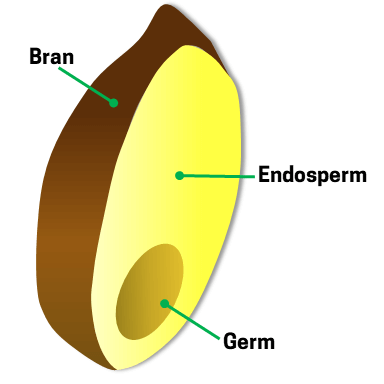 What Does Whole Grain Mean?
What Does Whole Grain Mean?
“Whole grain” foods contain all three parts of the original grain:
- Bran. This is the outer covering of the grain. It contains fiber, B vitamins, and antioxidants.
- Germ. This is the inner part of the grain, which contains antioxidants and plant compounds called phytochemicals. These are known to have disease-preventive properties.
- Endosperm. The endosperm is a part of the grain that is almost entirely starch.
A whole grain contains all three parts, but when a grain is refined, the bran and germ are removed, leaving you with just the starchy part. And as we saw earlier with the bagel and white potato, starch can be just as concerning as sugar when it comes to raising the glucose levels in our bodies.
Misleading Advertising to Watch Out For
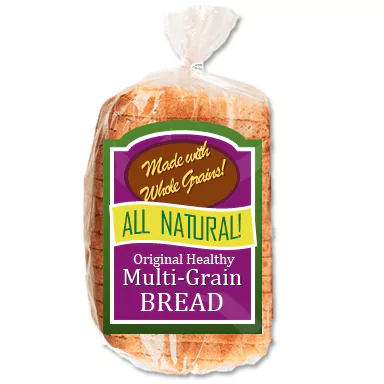
Unfortunately, there’s a lot of misleading advertising out there with regard to the food products we buy.
For example, a manufacturer can label a product as “made with whole grains” even if only a tiny fraction of the ingredients are actually whole. So, “made with whole grains” often means “made mostly with refined grains, with just a touch of whole grains added.”
Another confusing term is “multigrain.” This simply means the food contains multiple grains – but not necessarily whole ones. Often the grains are all or mostly refined.
The phrase “All Natural” doesn’t really have any nutritional meaning at all – and it definitely doesn’t mean the product contains whole grains.
The best advice is to look at the product label or ingredient list for the words “100% whole grain” or “sprouted grain,” since only whole grains can sprout. Anything else is usually refined.
Why Intact Grains are Best
Keep in mind that intact whole grains are a better choice than even whole-grain bread or other foods made with whole-grain flour. Pulverizing the grains into flour – even if it is whole-grain flour – releases more sugar into the body than with intact grains.
Carbohydrates: Why You Need Fiber
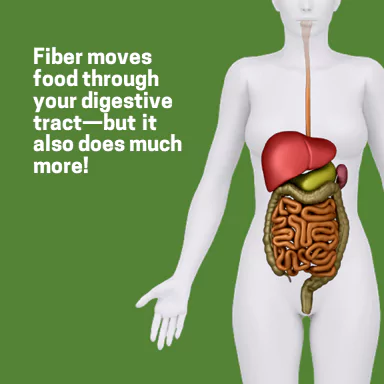 The outer part of the grain — the bran – contains a lot of fiber. But is fiber really all that important?
The outer part of the grain — the bran – contains a lot of fiber. But is fiber really all that important?
It sure is. In fact, fiber is the one type of carb that most people don’t get enough of. Unlike other carbs like sugar and starch, fiber isn’t used for energy. The body doesn’t absorb it at all. It acts as a bulking agent and helps move food through our digestive tract.
But that’s not all – fiber can help lower the risk of problems like hemorrhoids, some types of cancers, and diseases of the colon. Fiber also helps control our glucose levels because it slows our bodies’ absorption of sugar. And it can even help with cholesterol control – especially the soluble fiber found in pulpy vegetables and fruit.
How Much Fiber Do You Need?
The Institute of Medicine recommends about 30 grams of fiber a day, but most people get only about half that – leaving a big deficit in their fiber intake!
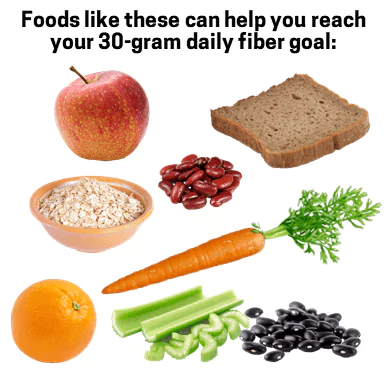 The good news is, with a little forethought, it’s pretty easy to improve your fiber intake. The foods shown here are a good way to contribute to your 30-gram daily goal.
The good news is, with a little forethought, it’s pretty easy to improve your fiber intake. The foods shown here are a good way to contribute to your 30-gram daily goal.
Four Things to Remember About Carbs
- Choose whole, unprocessed foods. Do so as much as you can. Choices like raw fruits and vegetables will work well here.
- Aim to cut down all sweetened foods. This is important to follow, especially for sweetened beverages. Too much sugar definitely leads to health problems, and we just don’t know enough about artificial sweeteners. When you want something sweet, go for a piece of fruit – a better choice than juice. The fiber and nutrients in unprocessed fruit can help blunt the effect of the natural sugar it contains.
- Eat intact whole grains. When you eat grains, it’s best to eat intact whole grains like oats, barley, and farro. But if you do opt for bread, make sure it’s 100% whole-grain.
- Reduce your intake of starchy foods. Remember that starchy foods carry a big glycemic load, so they cause a big jump in blood sugar. Try to choose foods that are less starchy whenever possible.

